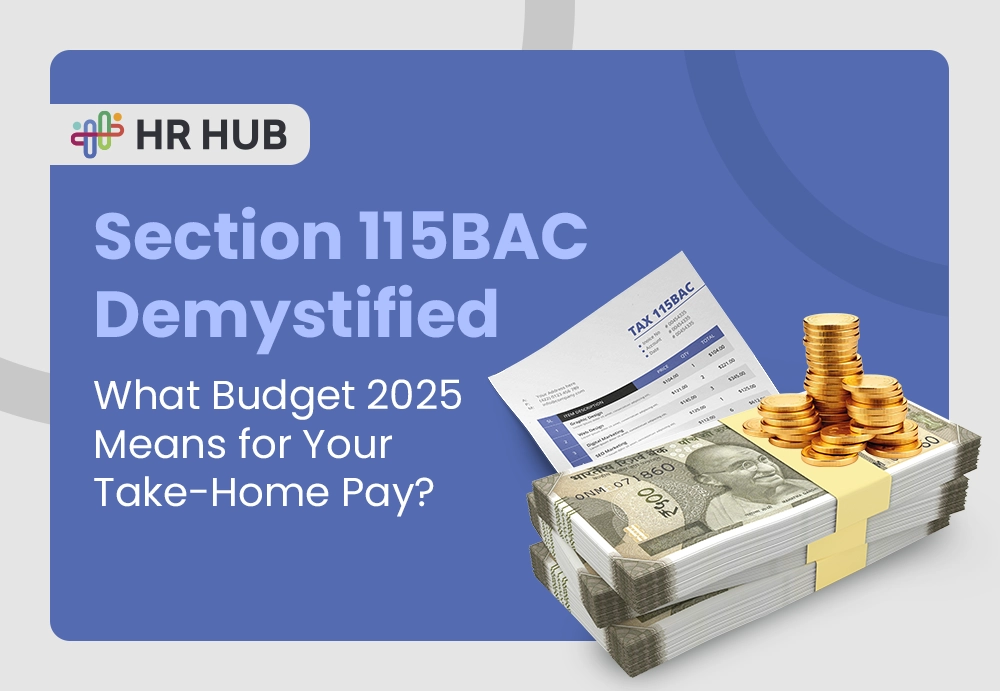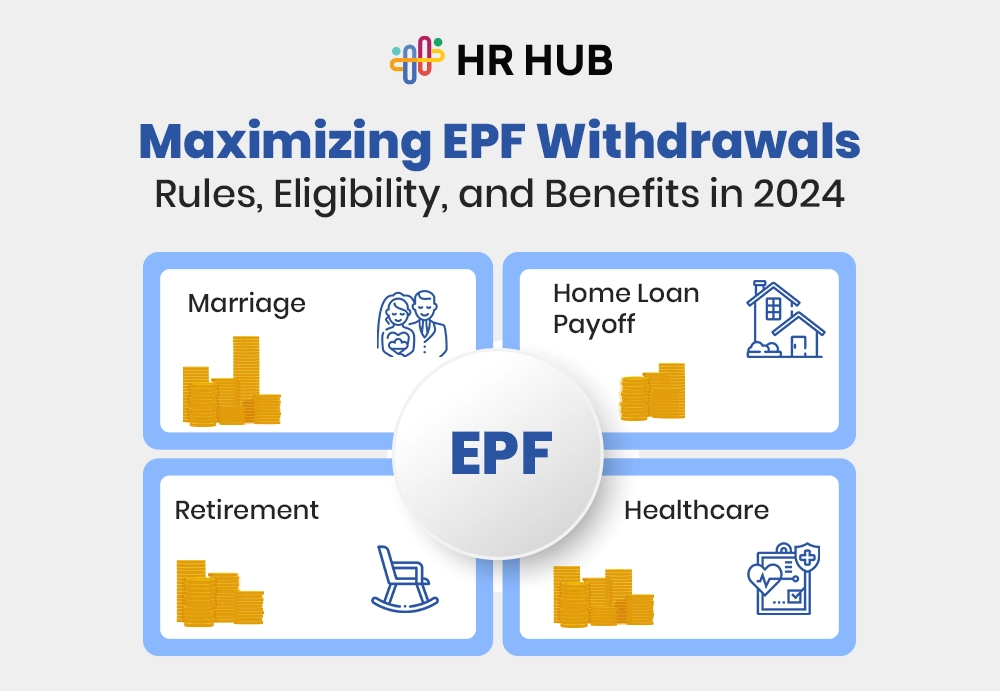In a global economy where mergers, acquisitions, remote work, and AI are rewriting the rules of business overnight, HR has transformed from a “people department” into a strategic command center. For large companies, this evolution brings both opportunity and complexity.
Handling payroll and hiring is only one aspect of managing tens of thousands of employees across multiple time zones; another is managing a workforce that is as dynamic as the business. Because the stakes are higher, there is less opportunity for error. This is exactly why the best HR systems for large companies in 2025 are no longer “nice-to-have” tools; they’re the backbone of enterprise success.

1. Workday HCM
Think of Workday as the strong center for human resources, finance, and planning in companies. It may be simple to look at, but it offers a lot of functionality. Its cloud architecture is designed to grow with some of the biggest workforces in the world without a hitch, making it more than just "scalable."
What makes it truly stand out in 2025 is its AI muscle. Features like HiredScore for precise candidate matching and smart internal mobility recommendations aren’t gimmicks—they’ve been proven to boost recruiter efficiency by up to 25% and speed up hiring manager responses by 34%. Add in agentic AI embedded across modules, plus innovations from strategic acquisitions like VNDLY, and you’ve got a system that keeps enterprises a step ahead in both speed and intelligence.
2. HR HUB
If large enterprises had a “perfect-fit” HRMS wishlist, HR HUB would check every box—and then some. Designed with modular scalability at its core, it grows with your organization rather than forcing costly migrations later.
It’s an all-in-one command center for HR, integrating payroll, attendance, recruitment, onboarding, performance management, leave tracking, employee engagement (via Social HUB), and deep analytics. The Enterprise Suite adds global compliance tools, intelligent document management, and advanced time tracking with smart notifications—perfect for distributed teams and complex approval chains.
The result? A compliance-first, integration-ready HR platform that’s as comfortable managing a 500-person regional office as it is orchestrating a 50,000-employee global workforce—all with a clean, mobile-friendly interface.

3. SAP SuccessFactors
Multinational corporations that require depth should use SAP SuccessFactors. It’s not just about managing headcount; it’s about shaping the employee experience at scale. Its Human Experience Management approach brings personalization into corporate HR—think tailored learning journeys, role-specific content, and flexible succession planning.
When paired with SAP’s wider ecosystem, it becomes a global compliance and reporting machine, ensuring every HR decision aligns with both corporate strategy and local law.
4. Oracle Cloud HCM
From the moment a candidate applies to the day they retire, Oracle Cloud HCM covers the entire HR lifecycle. Its standout feature, AI-driven Activity Centers, tailors dashboards by role—giving employees, recruiters, and payroll teams a personalized “mission control” view of what matters most.
It is designed for intricate organizational charts and rapidly shifting business priorities, and it has workforce modeling capabilities, low-code/no-code customization tools, and dynamic skills mapping. Bonus: HR doesn't end when you leave your desk, thanks to its mobile-first design.
5. UKG Pro
UKG Pro is the undisputed champion for organizations with large hourly or shift-based workforces. To maintain compliance and morale, it does more than just track hours; it also incorporates deep scheduling intelligence with payroll, benefits, performance management, and even sentiment analytics.
Because the dashboards are designed for real-time visibility, they are popular in sectors like manufacturing, retail, and hospitality, where workforce decisions must be made quickly.
6. ADP Workforce Now
For enterprises—especially in North America—ADP Workforce Now is often the first name on the shortlist. It delivers payroll and tax compliance at scale, backed by benefits administration, talent management, and advanced benchmarking.
Its dashboards go beyond HR metrics, offering leadership-ready insights for budgeting, forecasting, and retention strategy—backed by ADP’s long-standing reputation for reliability.
7. Ceridian Dayforce
The defining feature of Ceridian Dayforce is its real-time unified data model. Any HR or payroll change—whether it’s a new hire, a tax update, or a pay adjustment—updates instantly across the system.
This not only slashes compliance risks but also gives decision-makers up-to-the-minute accuracy. Combined with its mobile-first approach and global payroll support, it’s built for enterprises that want agility without sacrificing depth.
Why Large Enterprises Can’t Afford Average HR Systems
Managing human resources in a large organization is similar to navigating a ship through turbulent, busy waters. The entire company may be impacted by a single misstep, such as a payroll calculation gone wrong in a different currency, a failure to provide a compliance update in a particular nation, or a hiring hold-up in a crucial project.
Without the right HR software for large companies, here’s what often happens:
- Data silos create blind spots – When HR, payroll, and recruitment operate on separate systems, leaders lack a unified view of the workforce.
- Compliance becomes a game of catch-up – Each region’s labor laws evolve constantly, making manual tracking risky.
- Administrative work drowns strategy – Instead of driving employee engagement or talent growth, HR teams spend hours reconciling spreadsheets.
Enterprise-grade HR systems solve these problems not just by automating tasks but by creating a single, real-time source of truth for workforce management.

What Defines the Best HR Systems for Large Companies in 2025
Not every HR platform is ready to handle the demands of a 10,000+ workforce operating across multiple regions, regulations, and cultures. The leading best HR systems for large companies in 2025 share a common DNA: they are engineered to manage complexity, scale, and rapid transformation—without a single compromise on speed, accuracy, or user experience.
Let’s break down the pillars that set them apart.
1. Scalability That Grows With You
Scalability isn't a "nice-to-have" in enterprise HR; it's what separates growth from stagnation. Without requiring a complete reimplementation, your HR system should be able to manage a significant increase in the number of employees, data volume, and transaction frequency.
A true enterprise-ready HR platform supports:
- High-volume concurrent access for thousands of employees and managers logging in simultaneously.
- Multi-region workforce management with separate time zones, policies, and workflows.
- Elastic infrastructure that automatically adjusts capacity during peak events—like payroll processing or annual appraisal season.
Real-world example: Imagine a global tech company acquiring a regional competitor overnight. Within weeks, hundreds of new employees need to be onboarded, assigned to pay groups, and integrated into performance review cycles. With a scalable system, this isn’t chaos—it’s a smooth transition handled through automated workflows and bulk import features.
2. Deep, Two-Way Integrations
The most effective HRIS systems for big businesses function as the digital hub of the company rather than as separate tools. Data flows smoothly between HR, payroll, finance, ERP, recruitment, and even communication platforms thanks to deep integrations.
Why this matters:
- Eliminates duplicate data entry and manual updates.
- Ensures accuracy—when employee details change in HR, payroll, and benefits reflect it instantly.
- Speeds up decision-making with real-time updates across all systems.
Example workflow: A manager approves an internal transfer in the HR system → Payroll adjusts the employee’s salary and location allowance → The finance dashboard reflects the budget change → The IT system triggers equipment reassignment—all without manual intervention.
3. Compliance Intelligence Across Borders
Big businesses frequently operate in several states, provinces, and nations, each with its own set of employment laws. In addition to being ineffective, manually tracking these poses a compliance risk.
Top HR systems in 2025 offer:
- Automated regulatory updates for payroll, tax, and employment law changes.
- Configurable compliance rules for region-specific policies (e.g., overtime limits in California, leave encashment rules in India).
- Comprehensive audit trails that log every change for easy verification during inspections.
Example scenario: An enterprise with offices in the U.S., UK, and UAE needs to apply different end-of-service benefit rules, tax codes, and work-hour restrictions. A compliance-intelligent HR platform automatically applies the right rules to the right employees, saving HR teams weeks of manual calculations.
4. Global Payroll & Benefits That Just Work
Payroll for large enterprises is not just a “cut the check” function—it’s a complex orchestration of multiple currencies, tax brackets, and benefit structures.
The best HR software for large companies provides:
- Multi-currency payroll processing with automatic exchange rate application.
- Localized benefits management to handle region-specific allowances, health plans, and retirement schemes.
- Self-service access so employees can view payslips, tax forms, and benefits on demand.
Impact: Not only does this ensure timely, accurate pay, but it also reduces payroll-related queries—freeing HR and finance teams to focus on higher-value work.
5. Enterprise-Grade Security & Access Control
Security of HR data is mission-critical for businesses and cannot be compromised. A breach might reveal private employee information, result in penalties from the authorities, and erode consumer confidence in the brand.
Leading platforms safeguard data through:
- End-to-end encryption to protect information in storage and transit.
- Role-based access control (RBAC) ensures users see only what they’re authorized to see.
- Advanced monitoring and alerts for unusual activity or access attempts.
Example benefit: A finance manager can access payroll cost reports but not individual medical benefit details. At the same time, recruiters can manage candidate profiles but not payroll data—ensuring data segmentation and compliance with GDPR and other privacy laws.
Shaping the Future of Enterprise HR
In the high-stakes world of large enterprises, HR systems are no longer background tools—they are central to competitive advantage. The best HRIS systems for large companies in 2025 are those that combine scalability, compliance intelligence, data-driven insights, and seamless user experiences to keep pace with the speed of business.
HR HUB is one such platform—engineered for complexity, yet designed for simplicity. From global payroll to compliance automation, performance tracking to employee engagement, HR HUB empowers large enterprises to streamline operations while driving strategic value. It’s not just about managing people; it’s about enabling them to thrive in a connected, competitive world.
For enterprises ready to turn HR from an administrative function into a growth engine, the future is already here—and the right HR system powers it.






